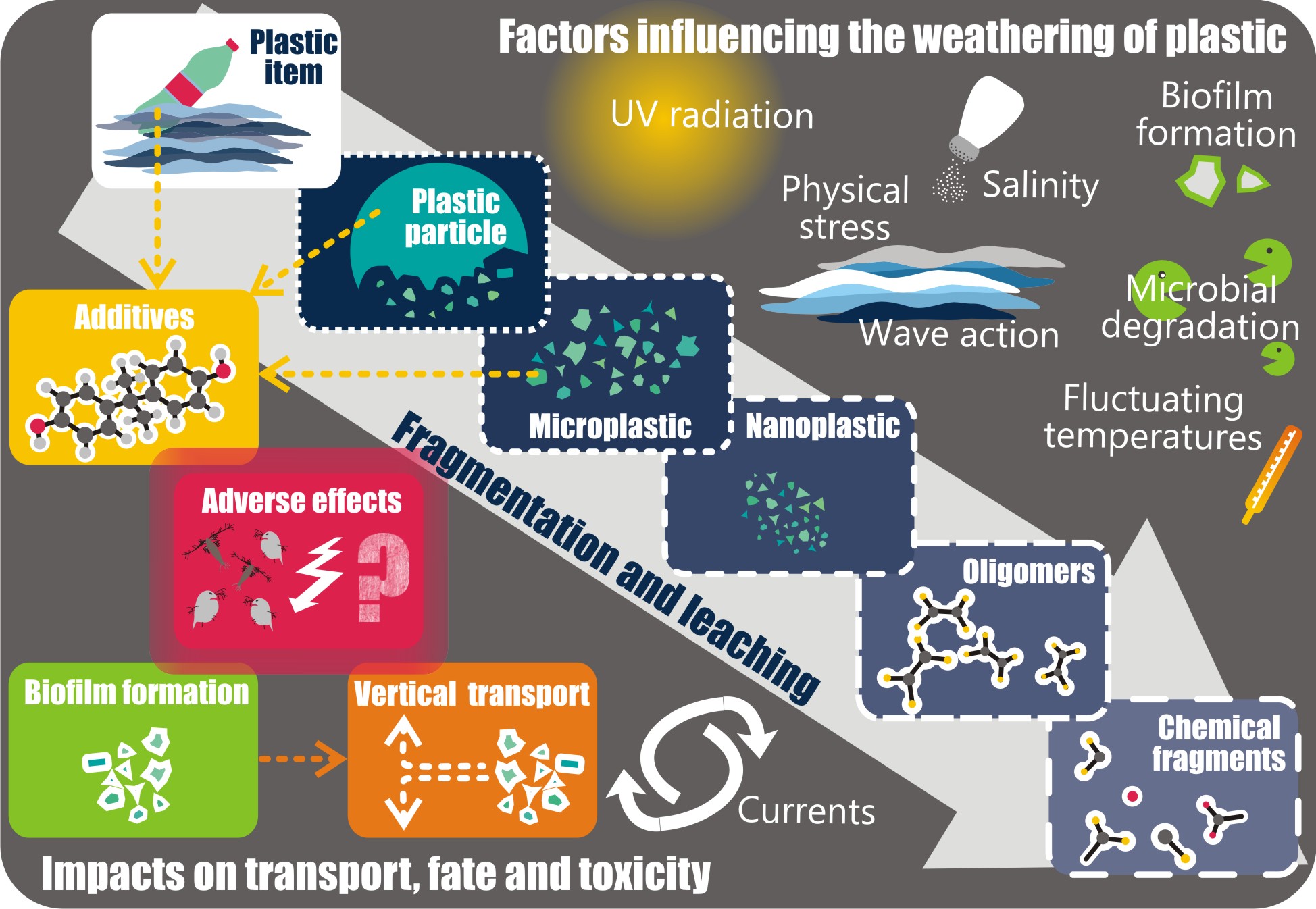Weathering and fate
Whereas initial research focused on new, spherical plastic particles, it was quickly recognized that an initial organic layer instantly covers the particle’s surface, the so-called eco-corona, which is followed by the formation of a biofilm. Over time, irradiation by UV light and mechanical stress, e.g. by wave action, have an impact on the plastic properties, amongst others leading to cracks and other surface effects. Diverse biotic and abiotic factors have impacts on the weathering of the plastics, resulting in changing properties and behavior which alters their transport and fate.
Contributing Scientists
Annika Jahnke
Dana Kühnel
Mechthild Schmitt-Jansen
Katrin Wendt-Potthoff
Elisa Rojo-Nieto
Projects:
WEATHER-MIC (BMBF/JPI Oceans, 2016-2019)
MICRO-FATE (BMBF, 2018-2021
P-LEACH (HGF, 2022-2024)
Publications:
[1] A. Jahnke, H.P.H. Arp, B.I. Escher, B. Gewert, E. Gorokhova, D. Kühnel, M. Ogonowski, A. Potthoff, C.D. Rummel, M. Schmitt-Jansen, E. Toorman, M. MacLeod. Reducing Uncertainty and Confronting Ignorance about the Possible Impacts of Weathering Plastic in the Marine Environment. https://doi.org/10.1021/acs.estlett.7b00008
[2] H.P.H. Arp, D. Kühnel, C.D. Rummel, M. MacLeod, A. Potthoff, S. Reichelt, E. Rojo-Nieto, M. Schmitt-Jansen, J. Sonnenberg, E. Toorman, A. Jahnke. Weathering Plastics as a Planetary Boundary Threat: Exposure, Fate, and Hazards. https://doi.org/10.1021/acs.est.1c01512
[3] M. MacLeod, H.P.H. Arp, M.B. Tekman, A. Jahnke. The global threat from plastic pollution. https://doi.org/10.1126/science.abg5433

